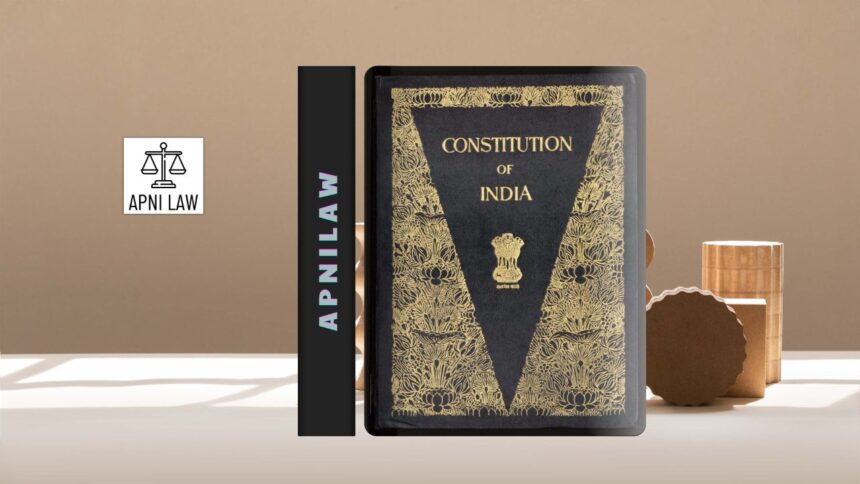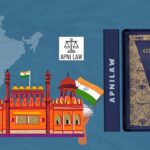When India achieved independence in 1947, the Constituent Assembly faced the critical question of which system of governance to adopt. The framers had to choose between the parliamentary system, which had been tested in Britain, and the presidential model, which was prevalent in the United States. After extensive debate, the framers selected the parliamentary system. This choice reflected India’s historical experience, its immense social and cultural diversity, and the need to ensure accountability and inclusiveness in governance.
What Historical Factors Shaped India’s Choice?
The colonial past played a decisive role in shaping India’s preference. During British rule, India had gradually been introduced to the parliamentary model through laws such as the Government of India Act of 1919 and the Government of India Act of 1935. These statutes created legislatures, expanded limited representation, and provided a foundation for cabinet-style governance. By the time of independence, Indian leaders were familiar with parliamentary practices.
The Constituent Assembly included several members, such as Jawaharlal Nehru, B.R. Ambedkar, and others, who had studied or closely observed the British parliamentary system. They found its principles of cabinet responsibility, legislative accountability, and collective decision-making more suitable for a newly independent country than the presidential system, which was less familiar in the Indian context.
This familiarity provided continuity. A radical shift to a presidential model might have led to uncertainty and instability during the fragile years of nation-building.
How Did Diversity and Representation Influence the Decision?
India’s vast diversity also shaped the choice of parliamentary government. The country had multiple religions, languages, castes, and regions. A single, powerful executive in the presidential model risked ignoring or suppressing this diversity. The parliamentary model, by contrast, provided a system of collective decision-making through a council of ministers drawn from different regions and communities.
This inclusiveness made it possible to accommodate different voices within the cabinet. The framers believed that in a nation as plural as India, consensus-building and wide representation were essential for stable governance. The parliamentary model ensured that representation was not concentrated in one office, but distributed across a group of ministers accountable to the legislature.
Why Was Political Accountability Considered Crucial?
The Constituent Assembly also valued political accountability. In the parliamentary system, the government remains directly accountable to the legislature. The executive can be removed through a vote of no confidence at any time. This constant oversight keeps the executive under the check of elected representatives.
The framers feared that the presidential model, with a fixed tenure for the executive, could create a powerful and less accountable leader. They worried that in a society still recovering from colonial authoritarianism, the presidential system might tilt towards dictatorship. By contrast, the parliamentary model provided mechanisms of daily accountability through debates, questions, and legislative scrutiny.
B.R. Ambedkar highlighted this aspect during the Constituent Assembly debates. He argued that while the parliamentary system might not guarantee long-term stability, it guaranteed responsibility. Responsibility to the people, he maintained, was more important for a democracy like India.
How Did Concerns of Conflict Shape the Choice?
Another major consideration was the avoidance of deadlock. In the presidential model, the executive and legislature often operate independently. This separation can lead to confrontation, especially when the President and legislature belong to different political parties. In countries with social divisions, such conflicts can paralyze governance.
The framers believed India could not afford such deadlocks. With deep regional and political divisions, a presidential model could have created repeated clashes between the executive and the legislature. The parliamentary model avoided this risk by making the executive part of the legislature itself. The Prime Minister and the cabinet depend on the majority support of the Lok Sabha, ensuring cooperation between the two organs.
Why Did Flexibility and Stability Matter?
The parliamentary system also offered flexibility in government formation. In a country where multiparty politics was expected, the ability to form coalition governments was crucial. The presidential model, with its rigid tenure for the executive, lacked such flexibility.
The parliamentary model allows for peaceful transfers of power and mid-term changes if governments lose majority support. This adaptability reduces the risk of prolonged political crises. The framers saw this as essential for maintaining stability in a diverse democracy.
What Role Did the Idea of Responsible Government Play?
The framers strongly valued the concept of responsible government. They wanted an executive that functioned under continuous public and legislative control. In the parliamentary model, the executive emerges from the legislature and remains answerable to it.
Ambedkar noted that this system, though less stable, ensured greater responsibility than the presidential model. The framers felt that India’s democracy should prioritize accountability over rigid stability. They believed that people’s representatives must have the power to question and change the government whenever it failed to meet expectations.
How Does the Presidential Model Differ in Comparison?
The presidential system follows a different logic. In this model, the executive is directly elected by the people for a fixed tenure. The legislature cannot dismiss the President before the end of the term, except through impeachment. This arrangement creates a strong and independent executive.
While this system offers stability and avoids frequent government changes, it reduces day-to-day accountability. The President does not answer directly to the legislature. In India’s context, this lack of accountability raised fears of authoritarian concentration of power.
Moreover, the presidential model creates the possibility of a clash between the executive and legislature. In a fragmented and diverse society, such a clash could weaken democratic governance. For India, the risks of conflict and authoritarianism outweighed the advantages of stability.
Why Was the Parliamentary System Seen as Suitable for India?
The parliamentary system suited India’s conditions because it combined accountability, inclusiveness, and flexibility. It allowed multiple communities and regions to find representation in governance. It kept the executive under the constant check of the legislature, ensuring responsiveness to the people. It also prevented authoritarian tendencies by diffusing power among a council of ministers instead of concentrating it in a single individual.
The framers viewed this system as the best way to balance stability with responsibility. They were aware that coalition politics and frequent government changes might occur, but they considered accountability to be the greater priority. The parliamentary model also aligned with India’s historical familiarity and the political training gained under British rule.
How Did the Constitution Reflect This Choice?
The Indian Constitution incorporated the parliamentary model by providing for a Council of Ministers headed by the Prime Minister, who holds collective responsibility to the Lok Sabha. The President of India serves as the nominal head of the state, while real power rests with the cabinet. This design ensures that the executive always remains accountable to the elected representatives of the people.
Articles 74 and 75 of the Constitution embody this principle. The Council of Ministers advises the President, and the Prime Minister leads this body as the head of government. The system preserves legislative oversight and upholds the democratic principle of government “by the people.”
For any specific query call at +91 – 8569843472
Conclusion
India’s adoption of the parliamentary system over the presidential model was not accidental but the result of careful consideration. The framers chose it because of their colonial familiarity with parliamentary practices, the need to accommodate diversity, the importance of political accountability, and the desire to avoid executive-legislative conflict. They valued flexibility, stability, and the idea of responsible government above rigid executive power.
This choice created a system where the executive remains accountable to the legislature, and through it, to the people. It safeguarded inclusiveness and representation in a diverse society. By rejecting the presidential model, the framers ensured that India’s democracy would be rooted in accountability and collective responsibility, not concentration of power.
The parliamentary system continues to define India’s democratic identity. It reflects the framers’ vision of a government that is accountable, adaptable, and inclusive, qualities essential for governing one of the most diverse nations in the world.







